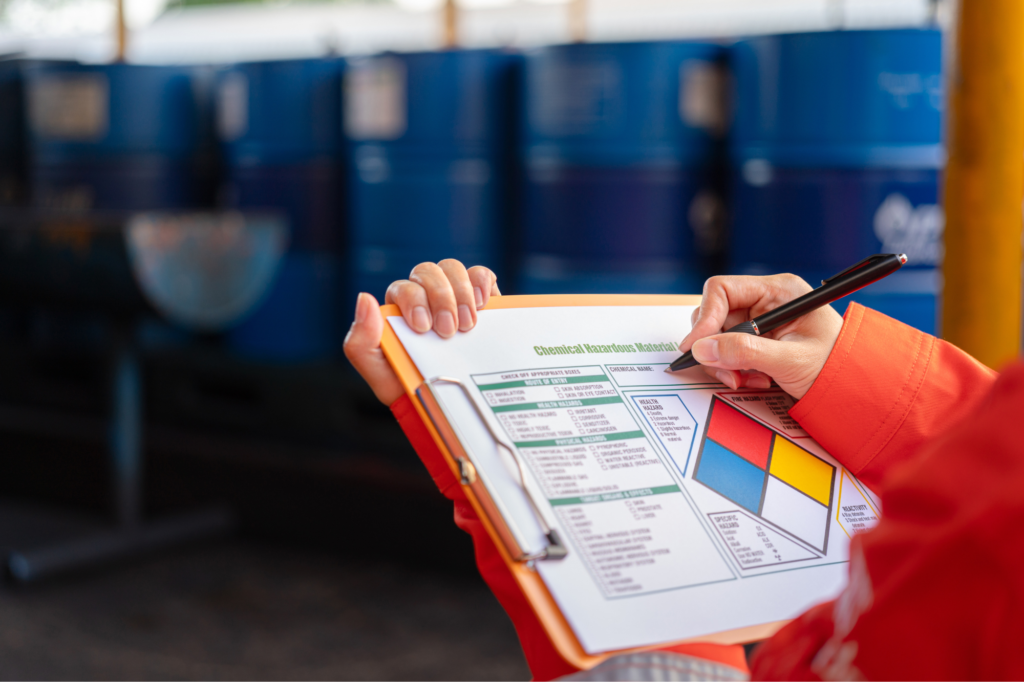
How to empower utility company workers to maintain effective safety management
Every day on the job, utility workers encounter a range of hazards, such as heavy equipment, electric and gas lines, stormy weather, and heights that may lead to cave-ins. From 2016 to 2020, the U.S. Bureau of Labor Statistics (BLS) reported an average of 25.6 annual fatalities in the utilities sector. Injuries are even more prevalent, with the BLS documenting a nonfatal injury rate of 73.6 per 10,000 full-time workers in utility system construction in 2020 alone.
Thankfully, utility workers and their employers have numerous options available to them for establishing safer working conditions. By doing so, they can not only save time and money but also foster a happier and healthier work environment. While adhering to the Occupational Safety and Health Administration (OSHA) standards is a solid foundation, companies should aim to exceed these standards to cultivate the utmost safety.
In this article, you’ll learn several ways in which your utility company can provide its workers with the tools to effectively manage safety.
Enforce PPE use
Improper use of personal protective equipment (PPE) poses a significant risk of injury, particularly within this industry. To effectively address this issue and minimize easily preventable injuries, one of the most effective approaches is implementing strict enforcement of PPE usage in all applicable situations. This encompasses various safety measures, such as using thick gloves and other shock-resistant gear for electrical work, wearing hard hats, and using harnesses. While workers may initially show resistance, it’s crucial to emphasize that consistent and proper use of PPE serves as a formidable defense against injuries and can ultimately save lives.
Standardize PPE
In addition to strictly enforcing the use of PPE, ensuring its proper application can be achieved through standardizing the equipment your workers use. It’s crucial to recognize that different brands and models often come with varying maintenance requirements and usage procedures, making it challenging to maintain consistency. While significant upfront costs may be involved in purchasing standardized PPE, the long-term benefits become apparent: reduced maintenance efforts, fewer replacements, and a decrease in incidents stemming from improper use. By implementing standardization, you can ultimately yield cost savings in the future.
Conduct safety training
Regardless of the experience level of your workforce, it’s important not to make assumptions about their familiarity with your safety policies and procedures. In addition to mandatory safety training during the onboarding process, ensuring ongoing safety and preparedness for your workers requires regular safety training classes.
These training sessions serve as valuable tools for reinforcing existing knowledge while keeping workers informed about new hazards and updated safety policies. To streamline and effectively monitor each worker’s training progress, consider using a digital training management system instead of relying on cumbersome paper-based records. By embracing technology, you can efficiently track and manage your workforce’s training.
Inspect and record jobsite dangers
While falls, cuts, and shocks may be common risks across various jobsites, it’s important to acknowledge that different locations possess unique hazards and areas of concern. For instance, a specific grouping of utility poles may be more susceptible to splintering and weakening, or underground cables in a particular area may be prone to damage. Regardless of the circumstances, it’s essential to assist your workers in identifying these dangers by meticulously recording each incident and establishing connections to identify problematic areas.
To effectively manage and address these hazards, it’s advisable to conduct audits and keep a record of any identified risks. By using audit management software that allows for the assignment of follow-up actions as hazards are documented, you can ensure nothing slips through the cracks and potential dangers are promptly addressed.
Use digital incident reporting
The manual recording of injuries can be a daunting task, and tracking paper-based data proves to be time-consuming. To streamline this process and facilitate a safer environment for your workers, consider implementing a digital incident reporting and investigation system. Our software suite enables you to capture incidents in real time and efficiently compile and filter the data, allowing you to swiftly identify commonalities and patterns. By leveraging this technology, you can simplify incident reporting and investigation, ultimately fostering a safer working environment.
Review job safety analysis
Ensuring your employees have easy access to all relevant documents, such as job safety analyses (JSAs) or job hazard analyses (JHAs), is paramount.
However, it’s unfortunate that many companies simply complete these documents and file them away, which not only wastes time but also fails to serve the best interests of your employees. Instead, consider storing JSAs in a readily accessible location where all workers can quickly retrieve and review them before engaging in any unfamiliar tasks. Moreover, it’s crucial to allocate time for periodic updates to ensure JSAs remain accurate and align with any new requirements.
These steps to get your safety paperwork in order are among the initial measures you can take to safeguard your workers from operating under the hazardous conditions inherent in working with electricity.


